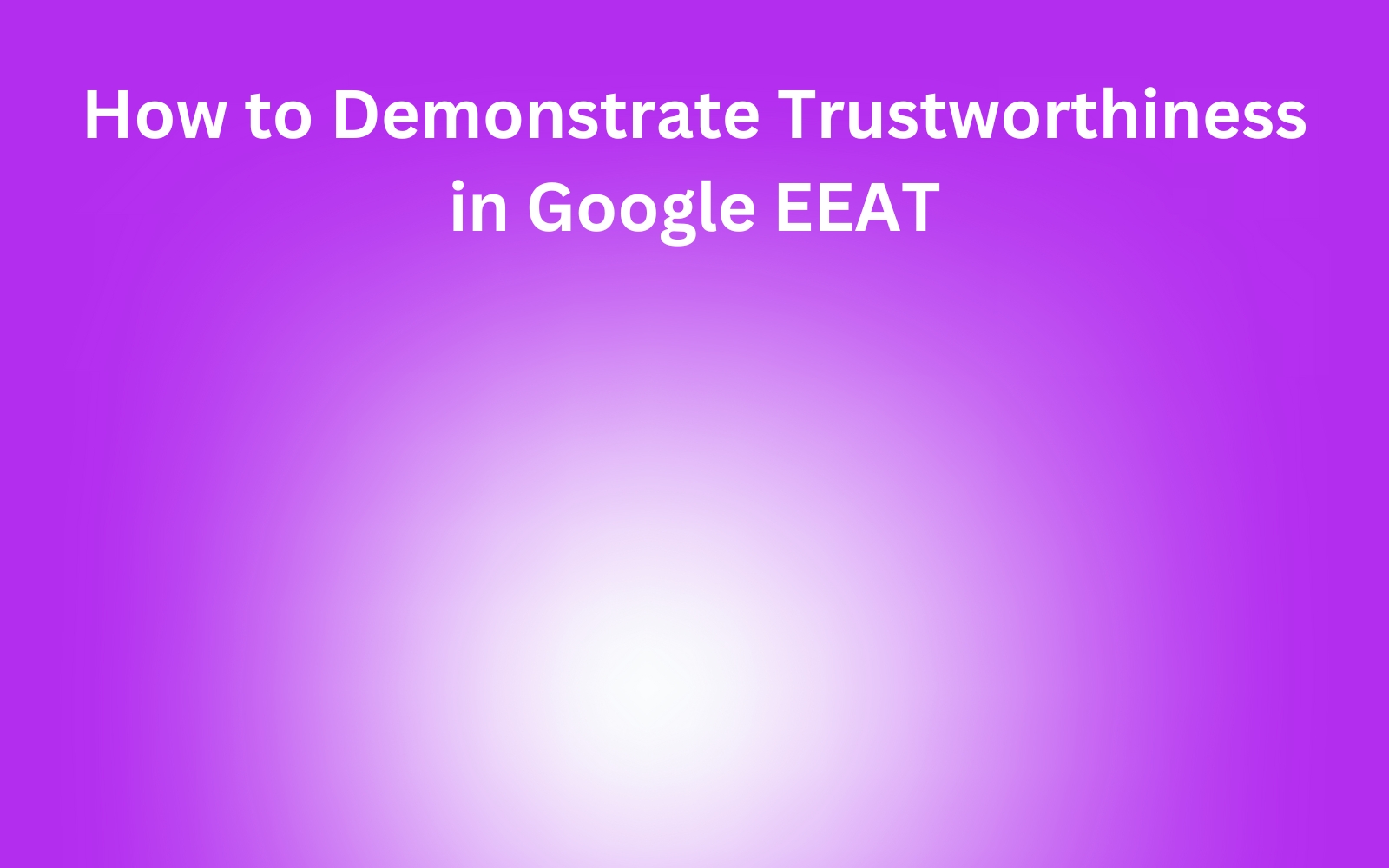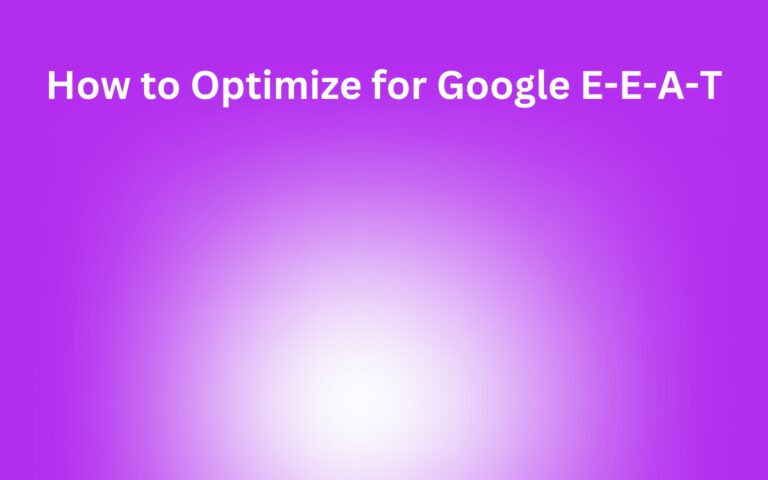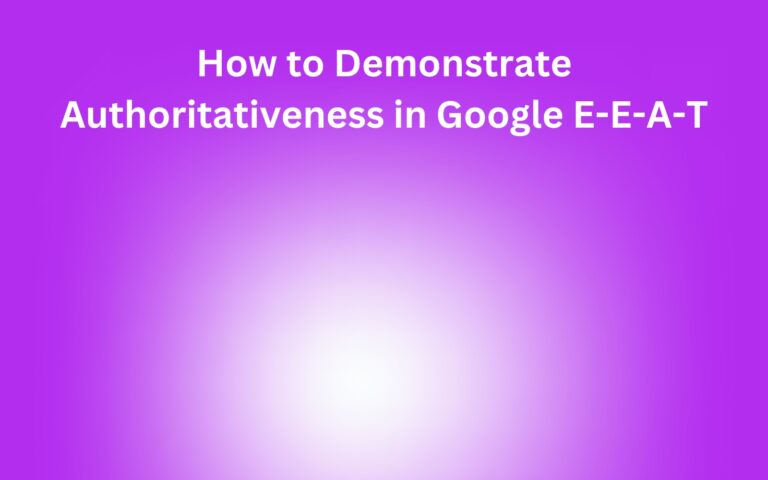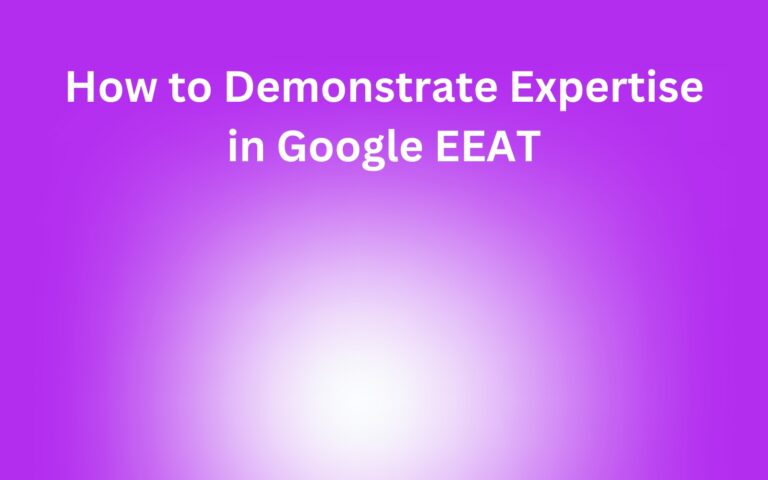How to Demonstrate Trustworthiness in Google E-E-A-T: The Step-by-Step Guide to Improving Trust Signals
Imagine landing on a website that has a “not secure” warning in the URL. It’s full of broken links and sketchy content, and you’re unsure if it’s written by someone knowledgeable in the field.
You wouldn’t hang around for long, would you?
It’s an extreme example, but any signals showing your site is untrustworthy is enough to get a low Google EEAT score, which can impact your organic rankings and overall reputation.
If you want a high-authority, trustworthy website that Google regularly shows in searches, you need to improve your EEAT signals.
In this quick guide, we’ll show you how to demonstrate trustworthiness in Google EEAT and why it’s essential to your content strategy.
What is Trustworthiness in Google EEAT?
Trustworthiness is the most essential element of Google EEAT. It shows your website is a quality resource of reliable information, taking into account the creator, content, and website as a whole. According to Google, no matter how well you rank for other EEAT signals, if you have a low trustworthiness score, you’ll have a low EEAT score.
The importance of trust in websites became apparent in 2009 with the Standford paper on TrustRank. Then, Google filed a patent in 2012 called “Search result ranking based on trust”.
If you’re still not convinced, Google references “trust” 172 in the Quality Rater Guidelines (QRG) – a PDF showing its team of raters how to rank websites.
How to Demonstrate Trustworthiness and Optimize Your Content For It
There are no set guidelines on how to demonstrate trustworthiness in EEAT, but there are plenty of helpful tips and clues within the QRG.
To save you from reading the entire 170-page document, here are five key strategies on how to optimize content for trust in Google EEAT.
1. Provide Detailed Info on Who You Are and What You Do
Start by making it clear who you are and what you do. This goes for your About Us page on your website and within an Author Bio on each blog post. Being transparent about your content contributors boosts trust in your website and helps show the published content is high quality and reliable.
2. Let Visitors Write Reviews and Add Testimonials
Social proof is king in marketing, so adding client reviews and testimonials to your website is a quick and easy way to boost your Google EEAT trust signals. There are two ways to do this:
- Add any Google or Yell reviews to your website.
- Allow customers to leave live reviews through comment sections on services or products.
Both are great options for boosting trust in your site and have the added benefit of promoting glowing testimonials.
3. Make User Data Safe and Secure
If your website doesn’t have an SSL certificate, this should be a top priority. Without it, your website displays a “not secure” warning in the URL, and it can cause about 46% of users to leave your site immediately.
Luckily, it’s an easy fix – adding an SSL certificate to your website costs between $8 and $1000 a year, depending on your brand, and significantly affects your Google EEAT signals.
4. Add and Display Security Badges and Certificates
Adding trust badges to your website acts just like social proof – it gives your client the trust that your website is safe and secure. Here are a few popular choices:
- Guaranteed Safe Checkout
- Free, Fast Shipping
- Accepted Payment Badges (Visa, Mastercard, etc.)
- Third-Party Endorsements (Google Rated, Amazon Bestseller, etc.)
- Money Back Guarantee
- Security Badges (Norton, LifeLock, VeriSign, etc.)
These badges immediately show you take extra steps to safeguard your customer’s information, so this will help boost trustworthiness in EEAT.
5. Deliver on What Your Promise in Your Headlines and Metas
The Google quality rater guidelines mention “manipulate, scam, harm, impersonate, defraud, deceive” and more. Google goes to great lengths to ensure that each website delivers on what was promised to weed out scam websites.
Don’t be tempted to over-promise in your headlines and meta descriptions and then under-deliver with your on-page content. Each page needs to be clear and transparent and deliver exactly what your users expect.
6. Write Informative, Helpful, Knowledgeable Content
Finally, ensure all the content on your website is informative and helpful. This will help boost almost every area of your Google EEAT score and show Google raters you are a trustworthy source of insightful information.
How to make content trustworthy:
- Focus on quality, long-form content that’s well-researched.
- Include facts and statistics to back up your claims.
- Include quotes and snippets from leading experts.
- Be transparent about who wrote the content and their credentials.
How Does Google Evaluate Website and Content for Trustworthiness?
Google’s search engine algorithm helps determine how trustworthy your website is based on the number of links you have and how established your website is.
Now, there’s no way to increase the age of your website; that just comes with time. However, you can boost the number of links your site has through PR opportunities.
At Linkifi, we help our clients land the best link-building opportunities from high-authority, established websites to help boost their EEAT signals. This superchargers your rankings and helps you become a trusted source more quickly.
How Google Raters Evaluate Trust
It’s not just the algorithm checking your website for Google EEAT trust signals; there’s also a huge team of Google raters working around the clock to monitor websites.
Here are a few things raters look for when reviewing your website:
- Reputation: Have you been in business for a long time and have a positive reputation within the online community?
- Testimonials: What are customers saying about you and your brand on trusted review sites?
- Content: Do you post high-quality, reliable content, and do you have trustworthy authors?
- Reliability: How much can users rely on your website for quality, accurate information?
- Security: Is your website safe and secure, and protecting user information?
Need to Bulk Up Your EEAT? Let Linkifi Help
Showing Google that you have a trustworthy website is crucial to getting a great EEAT score, so don’t leave it up to chance.
At Linkifi, we can help skyrocket your EEAT signals with powerful PR opportunities. We secure top publications across various industries to create valuable link-building opportunities.
We’ll even ensure your About Us page hits all the right points to get a good trust rating. Get started today.
FAQs on Trustworthiness in EEAT
What is the best way to make content trustworthy?
The best way to make website content trustworthy is to include original perspectives, real-life experiences, examples, and statistics to support your claims. Every piece of content on your site should be well-researched, informative, and written by someone knowledgeable in the subject matter.
What is the role of HTTPS in site trustworthiness?
Having HTTPS on your website shows users you are a safe and secure site. Without an SSL certificate (or HTTPS), users will get a “not secure” warning in the URL when they land on your page. Not only does this make your website look untrustworthy, but it can cause about 46% of users to abandon your site immediately.
How do content and meta descriptions make your website trustworthy?
Your content and meta descriptions must be clear and honest so users know what to expect when they click on your page. If your meta descriptions promise one thing, but your web page displays something else, Google will see your site as deceitful or even a scam, and you’ll end up with a low Google EEAT score.







